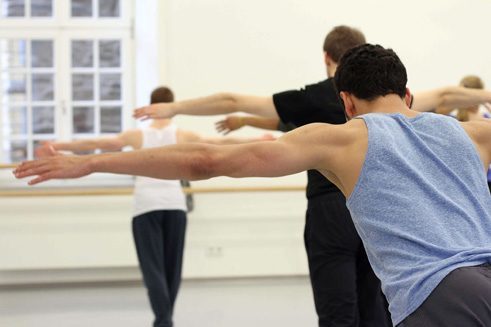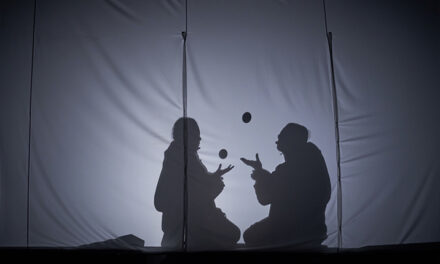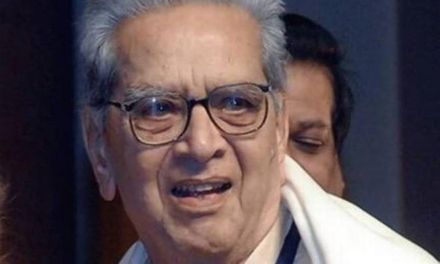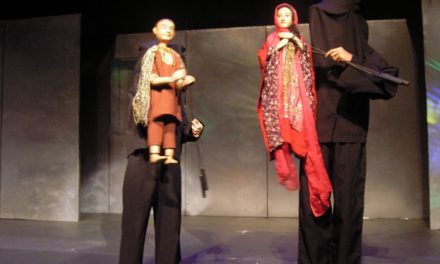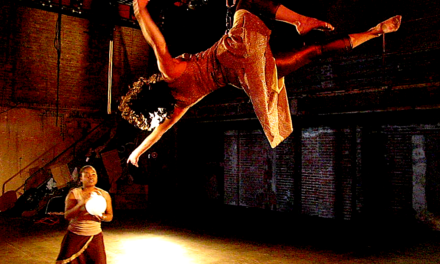The Folkwang University of the Arts in Essen has just turned ninety. A look back at its creation in 1927, its history, its influence, and its development as well as its many renowned alumni who took Folkwang out into the world.
In its foundation year 1927, the Folkwangschule was not yet a university, it only acquired this status in 1963. Where does a new school begin? There where the others, the old ones, no longer suffice; where people notice this deficiency and set to work. In the almost complete century of history, there are more interesting and noteworthy events.
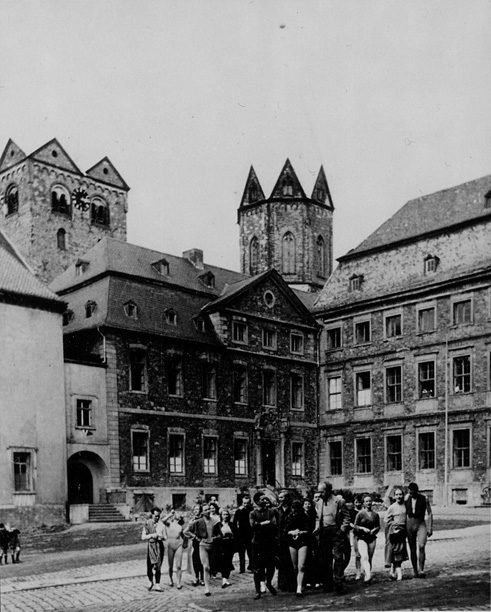
Wolfgang Jooss and the Folkwang Dancetheatre in front of Folkwang, ca. 1952. Photo credits: The Folkwang University of Arts, Dance Archive, Ernst Knodt
Precursors
In 1925, Kurt Jooss, who was engaged at the municipal theatre in Münster as movement director and head of the ensemble Neue Tanzbühne, expanded the existing College of Music into an Academy of Dance, Speech and Music – with a close connection to the theatre – together with his dancer-choreographer companion Sigurd Leeder and the avant-garde theatre director Rudolf Schulz-Dornburg. At that time there was no such vocational center in Germany: three arts disciplines under one training roof and a corresponding concept for a School of Modern Dance. After Joos had been more or less driven out of town due to his allegedly indecent productions, he and his team with their combination of creation plus training were offered a new home by the city of Essen. The existing schools of trades and applied arts were combined with the new tri-disciplinary vocational school under the name Folkwang. This was the name that Karl Ernst Osthaus, entrepreneur and art collector from Hagen, had chosen in 1902 for his museum that now housed the school, whereby the hall of the Germanic goddess Freya was reinterpreted as “hall of the people,” a venue for all citizens to encounter the arts.
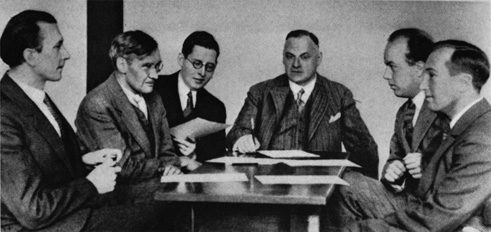
Folkwang Protagonists: Tidten, Schulz-Dornburg, Jooss, Erpf. Photo credits: The Folkwang University of Arts, Archive
What Is Folkwang?
This hall, now transformed into a school, was intended to enable pupils to gain access to–and indeed to engage in–all types of art. On 8th October 1927, The Folkwang Schools of Music, Dance and Speech opened in Friedrichstraße 34. In addition to the courses of the departments, there were also “overlapping” offers. Nowadays this is known as “interdisciplinary,” a term that has become almost meaningless, often used flippantly, but rarely infused with effort in artistic–or pedagogical–work. In those days the founders were well aware that the respective “discipline” was based on knowledge and ability. That the Folkwang story, with regard to its effects and its fame, would become mostly a dance story was not to be foreseen. It is certainly a tribute to dance that then as now saw itself as contemporary, as cosmopolitan, inquisitive and capable of integration, and to the intellect, passion, perception and persuasive power of the Jooss-Leeder team.
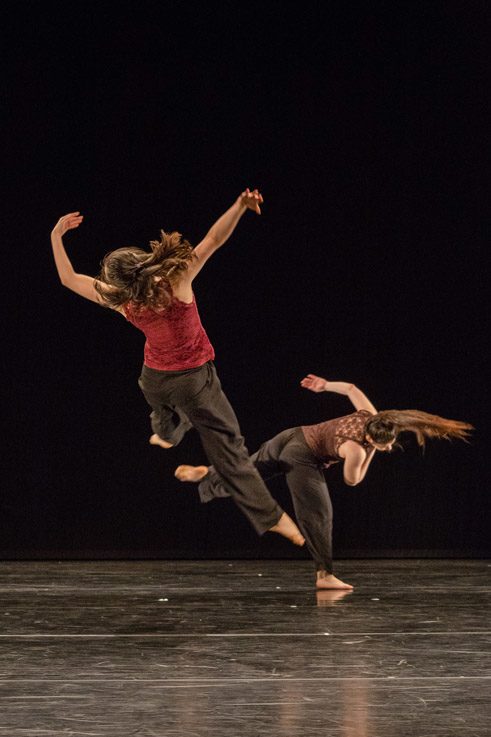
Young Choreographers at Folkwang University of Arts, 2017. Photo credits: Elsa Wehmeier
For they had to fight over and again for that which they had achieved and still wanted to achieve–the dance department, the company with its wellspring of alumni and external professionals, or the connection to an established theatre. For Jooss this triangle was important, but neither the Opera House in Essen nor later the one in Düsseldorf was really willing to comply with his free-spirited artistic concepts in the way that he wished. Furthermore, to cut a complicated story short (related in Patricia Stöckemann’s biography Etwas Ganz Neues Muß Entstehen. Kurt Jooss und das Tanztheater (K. Kieser Verlag, Munich 2001), Jooss left Germany in 1933 because he refused to dismiss his Jewish colleagues. Helped by patrons of the school, he emigrated to Dartington in the south of England, while The Ballets Jooss, as his non-ballet dance ensemble was rather misleadingly called, successfully toured for years through Europe and both Americas, performing his works, including his meanwhile legendary choreography The Green Table. This signature piece of the Tanztheater from 1931 with the piano composition by Fritz A. Cohen is still poignant today with its non-verbal yet eloquent portrayal of the disaster that results from warmongering.
Harmony Theory From Eukinetics And Choreutics
This appeal in the broadest sense that Kurt Jooss created in serious and light-hearted choreographies was based on his understanding of art and dance that sought the essence, a precise connection of inner life and outer form, movement, and space. This connection was also practiced and explored in the dancers’ training course that Jooss and Leeder constantly refined, and which the Folkwang Tanzabteilung in Essen-Werden, founded by Jooss in 1949, (since 2012: Institute for Contemporary Dance) has applied up to the present day.
They developed the method–rather than technique or style–in dissociation to the gymnastics that were gaining popularity in the mid-1920s and in order to prevent the new, modern dance falling victim to the dilettantism of twirling self-promoters who were flaunting themselves in the slipstream of artists such as Mary Wigman, Harald Kreutzberg and Gret Palucca. In the open spheres of those dance inventors, particularly Rudolf von Laban, Jooss and Leeder, who had merged into this world, searched for a systematisation in order to “stabilise and cultivate our present dance style just as the age of Rococo created the classical form of ballet,” whereby they took over some systematics from ballet and were never hostile towards it. The aim: “Dancers graduating from the school must fulfill all modern requirements for stage and society, and at the same time bear within them the possibility of the dance of the future.”
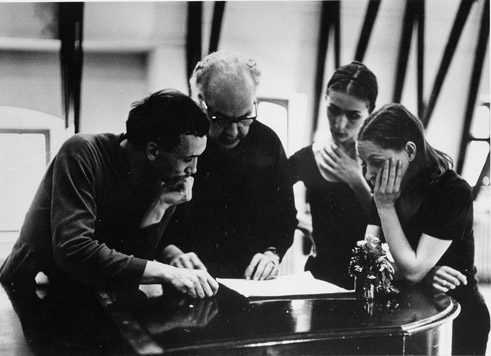
Rehearsal with Jean Cébron, Kurt Jooss, Pina Bausch, Erika Fabry, ca. 1963. Photo credits: The Folkwang University of Arts, Dance Archive
Becoming Young Again And Again
At that time Jooss and Leeder were both under thirty. Present times are constantly changing, but this foundation that was later cultivated by the Jooss pupils Jean Cébron and Hans Züllig in Essen, and nowadays by Lutz Förster and Stephan Brinkmann, was complemented by kinetography lessons in the dance notation worked out by Laban and Jooss; it is still useful for dance pupils–under the feet and in the head. Among the graduates of this school are famous personalities such as Pina Bausch, Susanne Linke, Reinhild Hoffmann, who redefined the Tanztheater from the 1970s on, also Urs Dietrich, Joachim Schlömer, Christine Brunel, Wanda Golonka, Henrietta Horn, Felix Ruckert, Ben J. Riepe. Yet also those who were less renowned carried something of Folkwang out into the world. Something that even after 90 years has not finished with questioning and dancing. As the choreographer, Bausch, who headed the Department and the Company Folkwang Tanzstudio, said in an interview in 2000: “…is still growing, in a different way …”
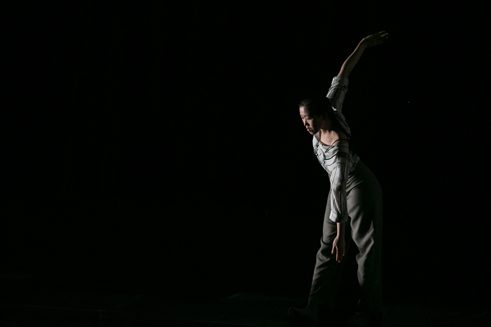
Folkwang Dance Studio, 2017. Photo credits: Veronika Kurnosova
This article was originally published in Goethe Institut on March 2018 and has reposted with permission.
This post was written by the author in their personal capacity.The opinions expressed in this article are the author’s own and do not reflect the view of The Theatre Times, their staff or collaborators.
This post was written by Melanie Suchy.
The views expressed here belong to the author and do not necessarily reflect our views and opinions.

